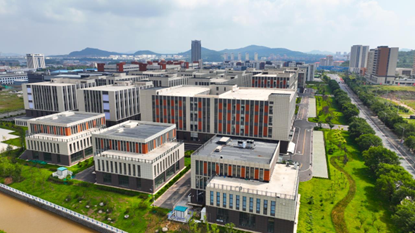Shandong province leads way in growing its green economy
The Weihai Torch High-Tech Industry Development Zone – in Weihai city, in East China's Shandong province – recently launched an action plan to expand its green, low-carbon and circular development from 2023 to 2025.

Going ever green and low carbon: A view of the Weihai Torch High-Tech Industry Development Zone. [Photo by Gao Xin for chinadaily.com.cn]
The action plan consists of essential tasks, such as developing emerging industries and upgrading traditional manufacturing. Others include constructing a green economic and industry supply chain, advancing its low-carbon transformation and increasing resource utilization and pollution controls – all aimed at boosting the circular economy in the region.
The circular economy is a different method for nations to manage their resources, exploring a different pathway to the conventional use of products in the traditional linear sense of make, use and dispose. In the circular economy resources are used for their maximum utility during the course of their life cycle and are then repurposed or regenerated in a cyclical pattern, minimizing waste.
To achieve the goals of the action plan, investments of 5.15 billion yuan ($706.79 million) will be made to implement 17 circular industrial supply chains and energy-saving and carbon-reduction projects. The funds will go into expanding sewage treatment plants, promoting the intelligent transformation of textiles and clothing digital platforms and more.
According to officials, the contribution of manufacturing value added in the zone to its GDP is projected to stay at 50 percent by 2025. Additionally, high-tech industries are expected to account for over 80 percent of the total output of large-scale industries.
What's more, the Weihai High-Tech Zone will promote the high-quality development of emerging industries such as medical devices, electronics information, carbon fiber and more to establish a modern industrial system characterized by green, low-carbon features.
Overall, the past two years have witnessed the zone's successful move to reduce energy consumption by 6 percent and decrease the concentration of major pollutants as well. (Edited by Zhou Yunlai)








